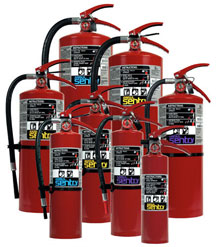 |
 |
| MSDS Topics |
Free Sites | FAQ's | Regulations | Glossary | Software | Suppliers |
| Books | Forum | Poll | Fun stuff | Quiz | Store | |
| MSDS and safety supplies | Search ALL our MSDS info | |||||
 | |||
 |
 |
 |
|
| Title: 03/04/2014 - OSHA's Amended Hazard Communication Standard (HCS 2012 ) regarding Petroleum Streams | |
| Record Type: Interpretation | Standard Number: 1910.1200 |
March 4, 2014
Erik C. Baptist
Counsel
American Petroleum Institute
1220 L Street, NW
Washington, DC 20005
Re: Request for Interpretation OSHA's Amended Hazard Communication Standard (HCS 2012 ) regarding Petroleum Streams
Dear Mr. Baptist:
This letter is being issued to API to provide guidance on how to apply the March 26, 2012, revisions to OSHA's Hazard Communication Standard (HCS 2012 ). Classifiers may rely on the following guidance in applying the classification and SDS requirements of HCS 2012 to petroleum streams.

For purpose of this letter, a petroleum stream includes crude oil and anything derived from crude oil that is:
The obligation to classify the health hazards of petroleum streams under the Hazard Communication Standard may be satisfied by following the below guidance, in conjunction with the general guidance found in A.0.1-A.0.3, in the application of the classification criteria in Appendix A of the standard.
(a) Where test data are available for the petroleum stream, the classification of the stream will always be based on those data.
(b) Where test data are not available for the stream itself, the classification may be based on a toxicologically appropriate read across from test results of a substantially similar stream. A substantially similar stream is one that has a similar starting material, production process, and range of physico-chemical properties (e.g., boiling point and carbon number) and similar constituent compositions.
(c) If test data are not available either for the stream itself or a substantially similar stream, then the method(s) described in each chapter of Appendix A for estimating the hazards based on the information known will be applied to classify the stream (i.e., application of cut-off values/concentration limits).
(a) When reliable and good quality data are available to classify a petroleum stream-based on testing of the stream or the toxicologically appropriate read-across to a substantially similar stream-a weight of evidence analysis supported by that data may be relied upon for classification regardless of whether a CMR constituent is present in the stream. A substantially similar stream is one that has a similar starting material, production process, and range of physico-chemical properties (e.g., boiling point and carbon number) and similar constituent compositions.
(b) To be reliable and good quality test data, the data must be from one or more tests that reflect appropriate study design and performance. The study or studies must appropriately take into account dose and other factors such as duration, observations, and analysis (e.g. statistical analysis, test sensitivity) so as to conclusively exclude the possibility that the lack of effect(s) is due to a poor study design, e.g., insufficient dose or number of subjects. A study (or studies) is conclusive in this sense if, when viewed in conjunction with all relevant information about the chemical, its results are consistent with the relevant information and allow a strong inference that the lack of effects is not due to a poor study design.
(c) Where reliable and good quality data are not available on the stream or a substantially similar stream, then the method(s) described in each chapter of Appendix A for estimating the hazards based on the information known will be applied to classify the stream (i.e., application of cut-off values/concentration limits).
Many petroleum streams are of unknown or variable concentration, and cannot be represented by unique structures, molecular formulas, or fixed concentration percentages. In addition, petroleum industry test data are largely based on the testing of streams rather than the hundreds or thousands of individual constituents of those streams. In light of these facts, application of the disclosure requirements in Section 3 of table D.1 to petroleum streams may be infeasible and/or undermine the usefulness of the SDS. Thus, SDSs for petroleum streams that are in accordance with the following guidance will be considered to be in compliance with the standard for enforcement purposes.
Thank you for your interest in occupational safety and health. We hope you find this information helpful. OSHA requirements are set by statute, standards, and regulations. Our interpretation letters explain these requirements and how they apply to particular circumstances, but they cannot create additional employer obligations. This letter constitutes OSHA's interpretation of the requirements discussed. Note that our enforcement guidance may be affected by changes to OSHA rules.
Sincerely,
David Michaels, Ph.D, MPH
cc: Lawrence P. Halprin, Esq.
Keller and Heckman LLP
Attorney for API
The official, public domain, OSHA version of this document is available at http://www.osha.gov/pls/oshaweb/owadisp.show_document?p_table=INTERPRETATIONS&p_id=28943&p_text_version=FALSE